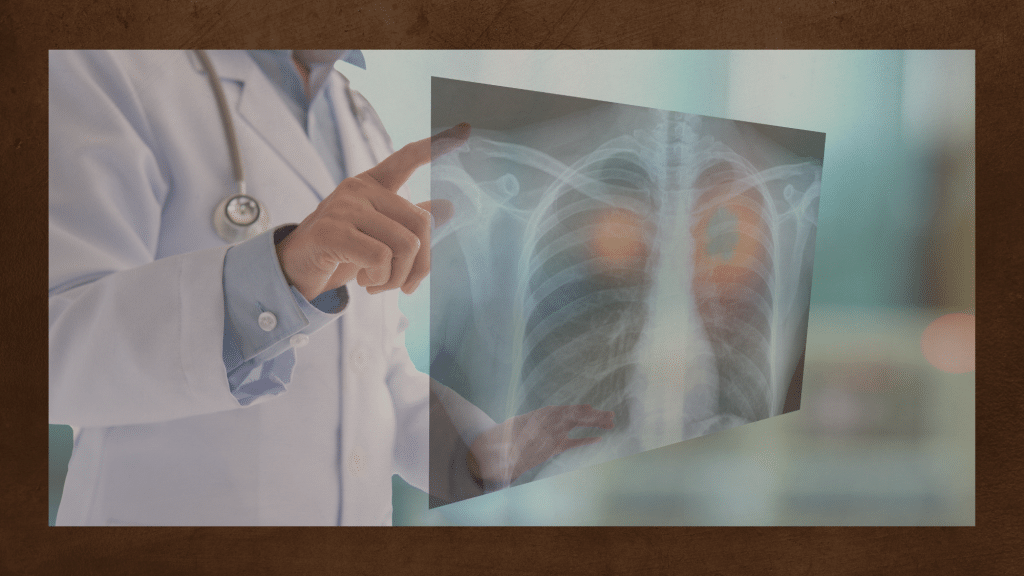In recognition of Lung Cancer Awareness Month, the latest installment of Medical Myths delves into common misconceptions surrounding lung cancer, addressing topics such as pollution, surgical interventions, and risk factors. According to the Centers for Disease Control and Prevention (CDC), the United States saw 218,520 new cases and 142,080 related deaths from lung cancer in 2018. Globally, lung cancer ranked as the second most prevalent cancer in 2020, with 2.21 million cases and 1.8 million deaths, following breast cancer. Despite its widespread occurrence, lung cancer remains shrouded in misunderstanding. To unravel the truth, we sought insights from Dr. Fred R. Hirsch, the Executive Director of the Center of Excellence for Thoracic Oncology at Mount Sinai’s Tisch Cancer Institute in New York City and the Joe Lowe and Louis Price Professor of Medicine, Hematology, and Medical Oncology at the Icahn School of Medicine at Mount Sinai.
1. Only smokers are susceptible to lung cancer.

Reality: While smoking significantly contributes to lung cancer, non-smokers can also develop the disease. Other factors like exposure to secondhand smoke, occupational hazards, and genetic predisposition play roles in lung cancer symptoms development.
Dr. Hirsch dispelled a misleading notion in an interview with Medical News Today, stating that the idea is incorrect and, regrettably, perpetuates a harmful myth that fosters stigma. Contrary to common belief, CDC data reveals that approximately 10–20% of individuals diagnosed with lung cancer in the U.S. either never smoked or have smoked fewer than 100 cigarettes in their lifetime. Each year, the CDC reports that around 7,300 deaths among nonsmokers result from exposure to secondhand smoke, with an additional 2,900 attributed to radon exposure. This underscores the importance of dispelling misconceptions surrounding the diverse risk factors associated with lung cancer.
2. There is no effective way to minimize the risk.

Reality: Various lifestyle changes can reduce the risk of lung cancer. Quitting smoking is the most impactful measure, and additional steps such as avoiding secondhand smoke, reducing environmental toxins, and maintaining a healthy lifestyle with regular exercise contribute to risk reduction.
Dr. Hirsch highlighted various strategies to mitigate the risk of lung cancer, emphasizing smoking prevention and cessation as the foremost measures. For those endeavoring to quit smoking, evidence-based tips are available to provide support. Additionally, Dr. Hirsch stressed the significance of minimizing exposure to secondhand smoke, also known as passive smoking. According to the CDC, nonsmokers exposed to secondhand smoke at home or work increase their risk of developing lung cancer by 20–30%. Furthermore, Dr. Hirsch noted that other smoking products are also considered potential contributors to the development of lung cancer.
3. Only older adults are at risk of developing lung cancer.
Reality: Although more common in older adults, lung cancer can affect individuals of any age. A concerning increase in cases among younger individuals emphasizes the importance of awareness and preventive measures across all age groups.
“That’s incorrect,” confirmed Dr. Hirsch. Despite over half of individuals diagnosed with lung cancer being older than 65, Dr. Hirsch pointed out, “An increasing number of younger individuals under the age of 50 are experiencing lung cancer, particularly among women.”
4. Living in a polluted city is worse than smoking for lung cancer risk.

Reality: While air pollution is a risk factor, smoking remains the primary signs of lung cancer. Both factors independently contribute to increased risk, necessitating efforts to reduce exposure to both smoking and pollution for effective prevention.
Compelling evidence suggests that traffic-generated pollution significantly elevates the risk of lung cancer. A meta-analysis investigating this correlation found positive associations between exposure to nitrogen dioxide, nitrogen oxide, sulfur dioxide, and fine particulate matter, and the risk of lung cancer. Notably, occupational exposure to air pollution, particularly among professional drivers, was linked to a significant increase in the incidence and mortality of lung cancer. However, drawing direct comparisons between the risks posed by pollution and smoking proves challenging. Dr. Hirsch explained that while residing in polluted cities is a risk factor, the relative severity compared to tobacco product use remains uncertain, and the combination of both factors may pose an even greater risk.
5. ‘I’ve smoked for years, there’s no point stopping now’

Reality: Quitting smoking at any time significantly reduces the risk of developing lung cancer. The sooner one quits, the greater the health benefits, including a lower risk of lung cancer and other smoking-related diseases. Regardless of your age or the duration of your smoking habit, ceasing smoking at any point enhances your well-being. Quitting is likely to extend your life, improve respiratory function, boost energy levels, and lead to financial savings.
Step into TJ Medical Hub, a worldwide initiative fueled by millions of young individuals driving positive change both in the digital realm and beyond! Discover the five essential facts you seek below, with detailed sources conveniently located at the bottom of the page. Once you’ve absorbed this knowledge, Whether you seek a supportive listener, advice, or basic symptom checks, our agency is here for you. Contact us directly for assistance, whether in Thailand or throughout your entire treatment journey.
Lung cancer is the leading cause of cancer deaths in the U.S., surpassing breast, colon, and prostate cancers combined. Encouraging smokers to quit is crucial, given that nearly 400,000 Americans, predominantly aged 60 and above, live with lung cancer, facing a 17% survival rate. Early detection is challenging, with only 15% caught in initial stages. Smoking is the main factor in 90% of cases, and asbestos exposure increases risk. African-Americans have a heightened susceptibility, even with lower cigarette consumption. Early intervention and smoking cessation are vital in addressing this major health concern.


